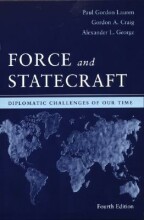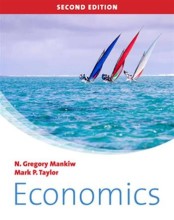Summary: Universal Human Rights In Theory And Practice | Jack Donnely
- This + 400k other summaries
- A unique study and practice tool
- Never study anything twice again
- Get the grades you hope for
- 100% sure, 100% understanding
Read the summary and the most important questions on Universal Human Rights in Theory and Practice | Jack Donnely
-
1 The Concept of Human Rights
This is a preview. There are 1 more flashcards available for chapter 1
Show more cards here -
When are rights most talked about?
When they are at issue, when their enjoyment is questioned, threatened or denied. -
What are 3 major forms of social interaction involving rights?
1) Assertive exercise (right is exercised- asserted, claimed, pressed.)
2) Active respect (taking the right into accouny in determining how to behave without it being claimed. We can talk of it but it hasnt been exercised)
3) Objective enjoyment (no exercise of enforcement, not given thought it is just being enjoyed.) -
In a Hobbesian state of nature, would rights be respected?
No. -
2 The Universal Declaration Model
-
What are 4 structural features of the universal declaration model that merit emphasis?
1) the rights are the mechanism for implementing values like nondiscrimination and an adequate standard of living.
2) all rights except for self determination of peoples, are rights of individuals, not coroporate entities.
3) the rights are interdependent and indivisible, not a menu where you pick.
4) eventhough theyre universal and equal, states have near exclusive responsibility to implement them for their own nationals. -
3 More questions
This is a preview. There are 30 more flashcards available for chapter 3
Show more cards here -
What are the two documents most responsible for modern legal formulations of human rights?
the American Bill of Rights & the 1789 French Declaration of the Rights of Man and of the Citizen
-
Which changes contributed to the rise of the West?
Development of modern sciences
Rise of Mercantilism (an economic doctrine in which government control of foreign tradeis of paramount importance for ensuring the prosperity and security of the state. In particular, it demands a positive balance of trade. This means the state's exports are larger than their imports. What this theory says is basically that a nation's prosperity depends on its supply of capital and that the quantity of trade over the whole world is unchangeable).
Great voyages of discovery -
Which country was most advanced in freedom?
France was the 1st country to abolish slavery, decriminalize homosexual activity (death penalty was removed for all sexual crimes and under the revision of the criminal codes under Napoleon, homosexuals were granted the same rights as other citizens) and emancipated Jews (officially on 27th September 1791 thanks to Adrien Jean Francois Duport, even though it was argued that Jews can be regarded as a misfortune because they lend enormous sums of money and are furthermore foreigners and should therefore not be regarded as citizens of France) -
In what did human rights 'receive its first mature expression?'
in the liberal social contract theory (the view that persons moral and/or political obligations are dependent upon a contract or agreement among them to form the society in which they live)
-
What are three major forms of social interaction involving rights?
Assertive exercise - the right is exercised.
Active respect - one takes the right into account and therefore it determines our behavior
Objective enjoyment - no exercise or enforcement of the right but both parties involved, the duty-bearer and the right-holder, are behaving conformed to the rights without actually thinking about them. I.e., someone who borrows my car will give it back and not steal it.
-
Should international human rights standards always be pursued through hard law? Give an example to support your answer.
While many argue for it, sometimes it is not always best to use hard law in human rights decisions. This can be seen in the following example. During the 1990s the USA tried to arrest a Somali warlord for violating international law. This led to a firefight which killed 18 US soldiers and many Somalis and resulted in the USA withdrawing from the state. Moreover, after this the USA was reluctant to have the UN involved in stopping the Genocide in Rwanda. Therefore in this situation, it would have probably been better to have focused less on hard law.
- Higher grades + faster learning
- Never study anything twice
- 100% sure, 100% understanding































